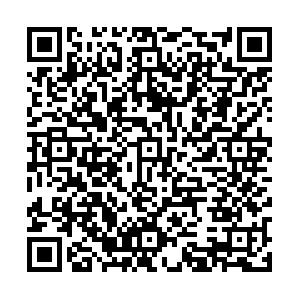Metal elements analysis and risk assessment of carcinogenicity on PM2.5 samples collected from Shenzhen and Taiyuan
-
摘要:
目的 对深圳和太原细颗粒物(particulate matter 2.5,PM2.5)进行金属元素分析和致癌风险评价。 方法 采集2017-2018年深圳和太原PM2.5样品,利用电感耦合等离子体质谱法(inductively coupled plasma mass spectrometry,ICP-MS)对PM2.5中10种金属元素浓度进行测量,并采用美国环境保护署(U.S Environmental Protection Agency,EPA)推荐的人体健康风险评估模型评价其健康风险。 结果 2017-2018年深圳PM2.5中金属元素浓度排序:铝>铅>锰>铬>铜>钒>砷>镍>镉>钴,浓度分别是1 807.67、31.02、30.63、17.37、17.32、11.59、6.98、4.76、2.24和2.20 ng/m3;太原2017-2018年PM2.5中金属元素浓度排序:铝>锰>铅>铬>铜>砷>镍>钒>镉>钴,浓度分别是2 817.64、91.04、63.33、26.56、24.69、11.82、10.39、4.46、3.42和1.01 ng/m3;深圳与太原PM2.5中铅、锰、砷、镍浓度差异具有统计学意义(均有P<0.05),其余金属浓度两市间差异无统计学意义。风险评估结果显示,深圳和太原5种致癌金属的致癌风险总和均>1.00×10-4,太原PM2.5中5种金属致癌风险(3.79×10-4)大于深圳(2.44×10-4)。5种致癌金属中铬致癌风险最高(>1.00×10-4),砷、镍、镉的致癌风险为1.00×10-6~1.00×10-4,铅的致癌风险<1.00×10-6。 结论 深圳和太原PM2.5中部分金属元素对人体存在一定程度的致癌风险,需要高度重视并采取预防控制措施。 Abstract:Objective To conduct metal elements analysis and risk assessment of carcinogenicity on Particulate Matter 2.5 (PM2.5) collected from Shenzhen and Taiyuan. Methods PM2.5 samples were collected in Shenzhen and Taiyuan from 2017 to 2018. Ten heavy metal elements in PM2.5 samples were detected by inductively coupled plasma mass spectrometry (ICP-MS). Health risk assessment was conducted using the recommended United States Environmental Protection Agency (EPA) model. Results Metal elements found in PM2.5 samples from Shenzhen included (in decreasing order of concentration) Al, Pb, Mn, Cr, Cu, V, As, Ni, Cd and Co. Their levels were 1 807.67, 31.02, 30.63, 17.37, 17.32, 11.59, 6.98, 4.76, 2.24, 2.20 ng/m3, respectively. Metal elements in PM2.5 samples from Taiyuan included Al, Mn, Pb, Cr, Cu, As, Ni, V, Cd and Co. Their levels were 2 817.64, 91.04, 63.33, 26.56, 24.69, 11.82, 10.39, 4.46, 3.42, 1.01 ng/m3, respectively. There were significant differences among Pb, Mn, As, Ni levels between Shenzhen and Taiyuan (all P<0.05), but remaining metal element levels did not show significant differences between Shenzhen and Taiyuan. Risk assessment data showed that the total risk from five carcinogenic metal elements in Taiyuan and Shenzhen were more than 1.00×10-4 and the total risk from five carcinogenic metal elements of Taiyuan(3.79×10-4) was higher than Shenzhen(2.44×10-4). Among five carcinogenic metal elements, Cr had the highest carcinogenicity risk (>1.00×10-4), then followed by As, Ni and Cd (1.00×10-6-1.00×10-4). Pb had the lowest risk (<1.00×10-6). Conclusion Some of the metal elements in PM2.5 samples collected from Shenzhen and Taiyuan have carcinogenicity risk. Further researches and measures for prevention and control should be considered. -
Key words:
- PM2.5 /
- Metal element /
- Environmental pollution /
- Risk assessment /
- Carcinogenicity
-
表 1 2017-2018年深圳和太原PM2.5中金属元素浓度
Table 1. Metal elements concentration in PM2.5 collected from Shenzhen and Taiyuan from 2017 to 2018
金属浓度a (ng/m3) 深圳 太原 2017 2018 2年合并 2017 2018 2年合并 铅Pb 33.28(26.01~45.36) 28.76(26.65~30.74) 31.02(26.01~45.36) 56.94(51.78~59.59) 69.73(61.61~74.76) 63.33b(51.78~74.76) 锰Mn 42.53 (26.73~72.36) 18.73 (18.37~19.73) 30.63 (18.37~72.36) 106.53 (73.48~154.30) 75.54 (67.11~81.51) 91.04c (67.11~154.30) 铝Al 1 577.15 (1 134.23~1 851.67) 2 038.20 (1 997.72~2 074.09) 1 807.67 (1 134.23~2 074.09) 4 117.70 (2 922.42~6 014.44) 1 517.59 (1 337.21~1 715.07) 2 817.64 (1 337.21~6 014.44) 砷As 7.26(5.38~11.02) 6.69(6.40~7.06) 6.98(5.38~11.02) 9.66(8.95~10.35) 13.99(13.03~15.56) 11.82d(8.95~15.56) 铬Cr 28.99(15.61~54.01) 5.75(5.60~5.96) 17.37(5.60~54.01) 30.09(27.01~32.77) 23.02(14.77~35.79) 26.56(14.77~35.79) 镍Ni 6.82(3.70~8.53) 2.70(2.54~2.79) 4.76(2.54~8.53) 12.45(10.45~13.99) 8.33(5.82~13.28) 10.39e(5.82~13.99) 镉Cd 1.19(1.01~2.83) 2.56(1.11~5.46) 2.24(1.01~5.46) 3.08(1.83~4.88) 3.75(2.92~4.54) 3.42(1.83~4.88) 钴Co 3.45(1.83~6.60) 0.95(0.88~1.01) 2.20(0.88~6.60) 1.59(0.97~2.51) 0.43(0.34~0.55) 1.01(0.97~2.51) 钒V 21.22(19.43~24.67) 1.97(1.94~2.01) 11.59(1.94~24.67) 7.08(4.79~11.03) 1.84(1.69~1.92) 4.46(1.69~11.03) 铜Cu 20.98(11.89~39.15) 13.65(12.65~14.31) 17.32(11.89~39.15) 27.72(25.06~29.27) 21.66(16.83~24.53) 24.69(16.83~29.27) 注:a表示括号中数据是最低浓度至最高浓度的浓度区间;b表示深圳和太原2年合并比较,U=2.882,P=0.004;c表示深圳和太原2年合并比较,U=2.722,P=0.006;d表示深圳和太原2年合并比较,U=2.402,P=0.016;e表示深圳和太原2年合并比较,U=2.242,P=0.025。 表 2 深圳和太原PM2.5中金属的致癌风险
Table 2. Carcinogenic risk of metals in PM2.5 in Shenzhen and Taiyuan
金属 深圳 太原 2017 2018 2年合并 2017 2018 2年合并 铅Pb(×10-7) 3.99(3.12~5.44) 3.45(3.20~3.69) 3.72(3.12~5.44) 6.83(6.21~7.15) 8.37(7.39~8.97) 7.60(6.21~8.97) 砷As(×10-5) 3.21(2.31~4.74) 2.88(2.75~3.04) 3.00(2.31~4.74) 4.15(3.85~4.45) 6.02(5.60~6.69) 5.08(3.85~6.69) 铬Cr(×10-4) 3.48(1.87~6.48) 6.90(6.72~7.15) 2.08(6.72~6.48) 3.61(3.24~3.93) 2.76(1.77~4.29) 3.19(1.77~4.29) 镍Ni(×10-6) 1.77(0.96~2.22) 0.70(0.66~0.73) 1.24(0.66~2.22) 3.24(2.72~3.64) 2.17(1.15~3.45) 2.70(1.51~3.64) 镉Cd(×10-6) 2.14(1.82~5.09) 4.61(2.00~9.83) 4.03(1.82~9.83) 5.54(3.29~8.78) 6.75(5.26~8.17) 6.16(3.29~8.78) 合计(×10-4) 3.83(2.14~7.03) 1.03(0.98~1.13) 2.44(0.93~7.08) 4.12(3.69~4.51) 3.46(2.41~5.09) 3.79(2.21~5.10) -
[1] WHO. 7 million premature deaths annually linked to air pollution[EB/OL]. (2014-03-25)[2019-03-09]. http://www.who.int/mediacentre/news/releases/2014/air-pollution/en/. [2] Shi L, Zanobetti A, Kloog I, et al. Low-concentration PM2.5 and mortality: estimating acute and chronic effects in a population-based study[J]. Environ Health Perspect, 2016, 124(1): 46-52. DOI: 10.1289/ehp.1409111. [3] Di Q, Wang Y, Zanobetti A, et al. Air pollution and mortality in the medicare population[J]. N Engl J Med, 2017, 376(26): 2513-2522. DOI: 10.1056/NEJMoa1702747. [4] Kasprzak KS, Diwan BA, Kaczmarek MZ, et al. Effects of ascorbic acid on carcinogenicity and acute toxicity of nickel subsulfide, and on tumor transplants growth in gulonolactone oxidase knock-out mice and wild-type C57BL mice[J]. Toxicol Appl Pharmcol, 2011, 257(1): 32-37. DOI: 10.1016/j.taap.2011.08.015. [5] Gilli G, Pignata C, Schilirò T, et al. The mutagenic hazards of environmental PM2.5 in Turin[J]. Environ Res, 2007, 103(2): 168-175. DOI: 10.1016/j.envres.2006.08.006. [6] Jablonska E, Socha K, Reszka E, et al. Cadmium, arsenic, selenium and iron-Implications for tumor progression in breast cancer[J]. Environ Toxicol Pharmacol, 2017, 53: 151-157. DOI: 10.1016/j.etap.2017.05.014. [7] 杜艳君, 莫杨, 李湉湉. 环境健康风险评估方法第四讲暴露评估(续三)[J]. 环境与健康杂志, 2015, 32(6): 556-559. DOI: 10.16241/j.cnki.1001-5914.2015.06.026.Du YJ, Mo Y, Li TT. Environmental health risk assessment method IV: exposure assessment (continued 3)[J]. J Environ Health, 2015, 32(6): 556-559. DOI: 10.16241/j.cnki.1001-5914.2015.06.026. [8] 孙庆华, 杜宗豪, 杜艳君, 等. 环境健康风险评估方法第五讲风险特征(续四)[J]. 环境与健康杂志, 2015, 32(7): 640-642. DOI: 10.16241/j.cnki.1001-5914.2015.07.026.Sun QH, Du ZH, Du YJ, et al. Environmental health risk assessment method V: risk characteristics (continued 4)[J]. J Environ Health, 2015, 32(7): 640-642. DOI: 10.16241/j.cnki.1001-5914.2015.07.026. [9] 魏巧珍, 李盛, 贾清, 等. 兰州市大气PM2.5中重金属的污染特征及健康风险评价[J]. 中华预防医学杂志, 2018, 52(6): 601-607. DOI: 10.3760/cma.j.issn.0253-9624.2018.06.008.Wei QZ, Li S, Jia Q, et al. Pollution characteristics and health risk assessment of heavy metals in atmospheric PM2.5 in Lanzhou City[J]. Chin J Prev Med, 2018, 52(6): 601-607. DOI: 10.3760/cma.j.issn.0253-9624.2018.06.008. [10] 刘月月, 王勤, 何漪, 等. 淄博市大气PM2.5中金属元素污染特征及健康风险评价[J]. 环境与健康杂志, 2018, 35(7): 651-654. DOI: 10.16241/j.cnki.1001-5914.2018.07.027.Liu YY, Wang Q, He Y, et al. Pollution characteristics and health risk assessment of metal elements in atmospheric PM2.5 in Zibo City[J]. J Environ Health, 2018, 35(7): 651-654. DOI: 10.16241/j.cnki.1001-5914.2018.07.027. [11] 何晓庆, 罗进斌, 王祚懿, 等. 婺城区大气PM2.5金属元素污染的慢性健康风险评估[J]. 预防医学, 2019, 31(1): 23-27. DOI: 10.3969/j.issn.1007-0931.2019.01.006.He XQ, Luo JB, Wang ZY, et al. Chronic health risk assessment of atmospheric PM2.5 metal element pollution in Wucheng District[J]. Prev Med, 2019, 31(1): 23-27. DOI: 10.3969/j.issn.1007-0931.2019.01.006. [12] 张云峰, 于瑞莲, 胡恭任, 等. 泉州市大气PM2.5中有毒金属元素的环境风险评价[J]. 地球与环境, 2018, 46(5): 456-462. DOI: 10.14050/j.cnki.1672-9250.2018.46.127.Zhang YF, Yu RL, Hu GR, et al. Environmental risk assessment of toxic metal elements in atmospheric PM2.5 in Quanzhou City[J]. Earth and Environ, 2018, 46(5): 456-462. DOI: 10.14050/j.cnki.1672-9250.2018.46.127 [13] Proctor DM, Suh M, Campleman SL, et al. Assessment of the mode of action for hexavalent chromium-induced lung cancer following inhalation exposures[J]. Toxicology, 2014, 325: 160-179. DOI: 10.1016/j.tox.2014.08.009. [14] Soza-Ried C, Bustamante E, Caglevic C, et al. Oncogenic role of arsenic exposure in lung cancer: A forgotten risk factor[J]. Crit Rev Oncol Hematol, 2019, 139: 128-133. DOI: 10.1016/j.critrevonc.2019.01.012. -




 下载:
下载: 